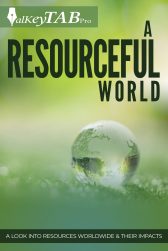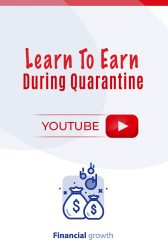Wishlist
Titles you like
$3.99

Become The Creative
- Item added
- by admin
About Book
We see them every day. Those people out there who seem to be able to tap into some deep well of creativity in everything that they do. You could give them a piece of garbage and come back later to find that they have created a masterpiece.
How do they do it? They know how to tap into their creativity. They know how to inspire their creativity and they know how to act upon their own creativity.
Do you want to learn how to boost your creativity and use it in every area of your life? If so than this book is for you. In this book you are going to learn the steps that you need to take in order to tap into that deep well of creativity that is going to allow you to create amazing pieces as well.
It does not matter if you are writing, painting, building, sculpting, cooking, or doing some other creative activity, all the information in this book will help you.
The information that you are going to find in this book is going to show you how you do not have to have any special gift in order to tap into your creativity. Anyone can do it. It is also going to show you how you can, starting today, begin to be more creative in everything that you do.
Before you know it, you are going to be the person that people look at with a desire to be as creative as. You are going to be that person who is impressing everyone with their creativity! You are going to be the person who can take something that everyone views as garbage and create a masterpiece out of it. But in order to do this you have to take that first step. What are you waiting for? Let’s get started boosting your creativity right now!
$3.99

Become The Creative
- Item added
- by admin
$7.99

A Resourceful World
- Item added
- by admin
About Book
This Earth, the third planet in our Solar system, was formed over four and a half billion years ago. It is the densest of all plants, and the most massive and largest of the known four rocky planets. Our Earth has a total surface area of 510 million km2, of which about 71% is below sea level (i.e. covered with water). This leaves the remaining 29% for the about 7.7 billion people that live upon this Earth.
The prime goal of every living thing upon the face of the Earth is to survive. Whether it is food, water, shelter, security or the wants and needs - each living thing – be it mankind, animals, plants and trees, birds of the air, living things in the ocean – are many and are insatiable.
Focusing on mankind, the 7.7 billion people (and counting) that live on this Earth are spread over seven earth surface areas known as continents. These continents are North America, South America, Europe, Asia, Africa, Australia, and Antarctica. The land composition and use, physical characteristics, weather, climate, and atmospheric conditions, and natural resources vary considerably from one continent to another.
Considering mineral and natural resources, Africa is reported to be the richest of all the seven continents. Notwithstanding this, no continent has an abundance of every single resource that it needs. In every continent except for Antarctica, there are countries and territories. In the same vein, countries and territories vary in available resources. What a continent or country lacks, another has it in abundance or in excess. It is an obvious fact that no continent, country, or territory has all the resources that its citizens need for survival.
While various natural and mineral resources have been discovered in various parts of the world, some are already being mined, explored, processed, and used in a meaningful and beneficial way. Others are being wasted, while some are not in use at all. What is not needed in one part of the world or in excess in another, is desperately needed in another part of the world. Also, it is a known fact that there are many resources yet to be discovered in every country and continent. Our entire Earth is yet to be 100 percent explored.
So, what are resources and which ones are available in each continent and country? What are their likely uses? In what quantities and forms do these resources exist in those countries and continents? To what extent can these resources be mined, explored, refined, and processed? What is their likely end-products?
These are some of the questions that will be explored in this book. Since no one has it all, knowing about these resources will not only help readers to know where to turn for the resources we need, but it might also help us to manage what we have in a better way.
$7.99

A Resourceful World
- Item added
- by admin
$5.99 Original price was: $5.99.$3.99Current price is: $3.99.

Learn To Earn During Quarantine
- Item added
About Book
Ever watched a YouTube video and saw a substantial number of views and then wondered to yourself if this creator is reeling in a lot of money just because of this video? Well, many people are making a lot of money from viral videos. The bad news is that it takes more than getting lucky to start making the big bucks from YouTube.
A lot of people just look at how hard moving upward on such a slope is, and give up before they even start. This book isn’t really trying to promise the reader an Irish pot of gold at the end of the rainbow, but rather the guidance needed to climb the essential steps to clear a path for yourself.
- Learn how advertisers want to put ads on your content
- Take a peek at the secret techniques used by the most successful YouTubers
- Enjoy creating amazing content while actually getting paid for it
- Transform intriguing ideas into trendy topics
- Learn the most common mistakes beginners make
- Develop fancy video editing styles
- Make a lot of money doing something you enjoy, hopefully making it your full-time job
- Find out the best type of content that’s always in demand
There’s no better time than now to get started!
Summary
Monetizing your content is a complicated process that may take some time to master, which is why this book was created to guide you through the process from A to Z. The first chapter will help you by giving you details of how the YouTube content monetization process works.
Once you have read chapter 2, you’ll know how to create an account that can be used to receive payments from the YouTube partner program and AdSense. Some of the equipment in chapter 3 will help inspire you, since the tools you will use can easily vary according to the type of content you want to produce.
The last two chapters cover the utilization of the best practices and proven techniques that can help you spark a little flame of fame that can go a long way in favor of your channel. All chapters focus on the essential setup and preparation that almost any YouTuber needs, with a little extra that can help nudge you in the right direction or niche of your choosing.
By the end of this book, you’ll understand the fine underlying mechanics between content creation and making money from YouTube, and how to make it a very enjoyable and profitable experience.
$5.99 Original price was: $5.99.$3.99Current price is: $3.99.

Learn To Earn During Quarantine
- Item added
Wishlist
Titles you like
- Add More Books
- Filter
$3.99

Become The Creative
- Item added
- by admin
About Book
We see them every day. Those people out there who seem to be able to tap into some deep well of creativity in everything that they do. You could give them a piece of garbage and come back later to find that they have created a masterpiece.
How do they do it? They know how to tap into their creativity. They know how to inspire their creativity and they know how to act upon their own creativity.
Do you want to learn how to boost your creativity and use it in every area of your life? If so than this book is for you. In this book you are going to learn the steps that you need to take in order to tap into that deep well of creativity that is going to allow you to create amazing pieces as well.
It does not matter if you are writing, painting, building, sculpting, cooking, or doing some other creative activity, all the information in this book will help you.
The information that you are going to find in this book is going to show you how you do not have to have any special gift in order to tap into your creativity. Anyone can do it. It is also going to show you how you can, starting today, begin to be more creative in everything that you do.
Before you know it, you are going to be the person that people look at with a desire to be as creative as. You are going to be that person who is impressing everyone with their creativity! You are going to be the person who can take something that everyone views as garbage and create a masterpiece out of it. But in order to do this you have to take that first step. What are you waiting for? Let’s get started boosting your creativity right now!
$3.99

Become The Creative
- Item added
- by admin
$7.99

A Resourceful World
- Item added
- by admin
About Book
This Earth, the third planet in our Solar system, was formed over four and a half billion years ago. It is the densest of all plants, and the most massive and largest of the known four rocky planets. Our Earth has a total surface area of 510 million km2, of which about 71% is below sea level (i.e. covered with water). This leaves the remaining 29% for the about 7.7 billion people that live upon this Earth.
The prime goal of every living thing upon the face of the Earth is to survive. Whether it is food, water, shelter, security or the wants and needs - each living thing – be it mankind, animals, plants and trees, birds of the air, living things in the ocean – are many and are insatiable.
Focusing on mankind, the 7.7 billion people (and counting) that live on this Earth are spread over seven earth surface areas known as continents. These continents are North America, South America, Europe, Asia, Africa, Australia, and Antarctica. The land composition and use, physical characteristics, weather, climate, and atmospheric conditions, and natural resources vary considerably from one continent to another.
Considering mineral and natural resources, Africa is reported to be the richest of all the seven continents. Notwithstanding this, no continent has an abundance of every single resource that it needs. In every continent except for Antarctica, there are countries and territories. In the same vein, countries and territories vary in available resources. What a continent or country lacks, another has it in abundance or in excess. It is an obvious fact that no continent, country, or territory has all the resources that its citizens need for survival.
While various natural and mineral resources have been discovered in various parts of the world, some are already being mined, explored, processed, and used in a meaningful and beneficial way. Others are being wasted, while some are not in use at all. What is not needed in one part of the world or in excess in another, is desperately needed in another part of the world. Also, it is a known fact that there are many resources yet to be discovered in every country and continent. Our entire Earth is yet to be 100 percent explored.
So, what are resources and which ones are available in each continent and country? What are their likely uses? In what quantities and forms do these resources exist in those countries and continents? To what extent can these resources be mined, explored, refined, and processed? What is their likely end-products?
These are some of the questions that will be explored in this book. Since no one has it all, knowing about these resources will not only help readers to know where to turn for the resources we need, but it might also help us to manage what we have in a better way.
$7.99

A Resourceful World
- Item added
- by admin
$5.99 Original price was: $5.99.$3.99Current price is: $3.99.

Learn To Earn During Quarantine
- Item added
About Book
Ever watched a YouTube video and saw a substantial number of views and then wondered to yourself if this creator is reeling in a lot of money just because of this video? Well, many people are making a lot of money from viral videos. The bad news is that it takes more than getting lucky to start making the big bucks from YouTube.
A lot of people just look at how hard moving upward on such a slope is, and give up before they even start. This book isn’t really trying to promise the reader an Irish pot of gold at the end of the rainbow, but rather the guidance needed to climb the essential steps to clear a path for yourself.
- Learn how advertisers want to put ads on your content
- Take a peek at the secret techniques used by the most successful YouTubers
- Enjoy creating amazing content while actually getting paid for it
- Transform intriguing ideas into trendy topics
- Learn the most common mistakes beginners make
- Develop fancy video editing styles
- Make a lot of money doing something you enjoy, hopefully making it your full-time job
- Find out the best type of content that’s always in demand
There’s no better time than now to get started!
Summary
Monetizing your content is a complicated process that may take some time to master, which is why this book was created to guide you through the process from A to Z. The first chapter will help you by giving you details of how the YouTube content monetization process works.
Once you have read chapter 2, you’ll know how to create an account that can be used to receive payments from the YouTube partner program and AdSense. Some of the equipment in chapter 3 will help inspire you, since the tools you will use can easily vary according to the type of content you want to produce.
The last two chapters cover the utilization of the best practices and proven techniques that can help you spark a little flame of fame that can go a long way in favor of your channel. All chapters focus on the essential setup and preparation that almost any YouTuber needs, with a little extra that can help nudge you in the right direction or niche of your choosing.
By the end of this book, you’ll understand the fine underlying mechanics between content creation and making money from YouTube, and how to make it a very enjoyable and profitable experience.
$5.99 Original price was: $5.99.$3.99Current price is: $3.99.

Learn To Earn During Quarantine
- Item added
